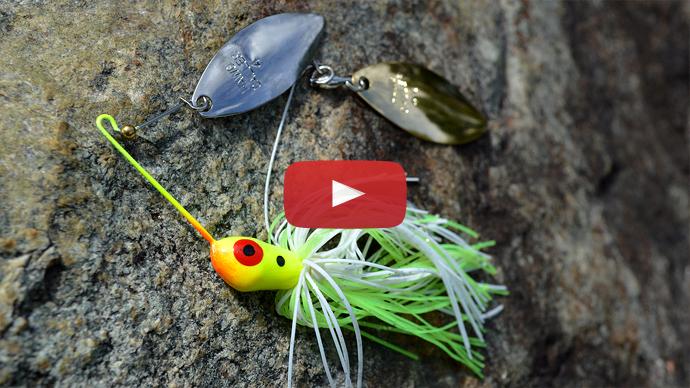Hey, guys. Drew Cook with BassResource, gonna talk to you about how I approach springtime tournaments. Whether it be grass lakes, you know, clear water places, all across the board, how I tournament bass fish in the springtime. I would say the number one rule, the first thing you have to do for a springtime tournament, whether it's early spring, middle spring, late spring, the thing you have to know is where the fish spawn. So you can do it on a map, you can do it from previous history there, videos, whatever. You know, just find where those fish are going to and going to come from.
When you find where they spawn, you can go there and work your way out. That's how I always do it. Go to where they would spawn and start moving out deeper from there. If they're already spawning, guess what? You found them right off the get-go. If they're two weeks away or they're chomping at the bits, they might already be up there but not spawning. So, just start fishing your way away from it.
The one thing that I look for is ditches and drains. Those are going to be like your highways that lead into those spawning areas. For an example, I won an event at Santee Cooper out of a spawning pocket that looked like every other pocket. The only difference was that it had a drain that ran all the way to the back of it. So those fish could stay in that four to six foot of water, eight foot of water all the way until they got to the back and then just hop up there in two foot and make a bed. But that's what I look for, and then I look for grass.
They really like to get on any type of grass or hardcover. So that'd be stumps, wood, rock, anything like that, brush piles that are right outside of the spawning areas.
And if it's super early spring, say like, almost late winter, they might be out there deeper. So it's going to be like a river ledge or a creek ledge bend, shell bed, point hump type thing. You know, you're going to end up working your way all the way out there to them. So you start from the bank where they're going to spawn and work your way out.
And in the springtime, before they're spawning, I very rarely ever fish anything slow. It's always going to be moving. It's going to be your lipless crankbaits, your vibrating jigs, your shallow diving crankbaits, out to deeper diving crankbaits, a swim jig, a swim bait. Not just your typical swim jig stuff like in the spawning pocket through the lily pads and stuff like that. I'm talking about fishing it in eight or nine foot of water with a swim bait on it, reeling it through the grass, around the grass. That's a great way to catch big ones that time of year.
Covering water like that, the reason that you do that is they're ganged up before they go up to spawn. All of them are right here because they're going to go right here shortly to spawn. By covering the water, one bite tells you a lot doing that. Say there's a grass line out front of a spawning pocket, and you're just bombing a trap, throwing a trap, throwing a trap, throwing a trap. You get one bite. You've covered half a mile out in front of this big pocket, and then you find whatever irregularity it is, whether it be a little bit of shell in the grass, a hole, say it's all hydrilla, and there's one clump of milfoil that's the size of your boat, and it's going to have a wad of them. And you can get right in a hurry that time of year, and a lot of times catch really big fish.
It seems like in the spring, you know, pre-spawn that, you know, the bigger fish get caught, you know, and then the spawn, you know, you catch bigger ones. And then whatever happens to that size class of fish, we don't really know. You can still catch some out there on the ledges and things like that. But those big ones, it seems like the big ones are going to bite.
Another thing with the springtime, a lot of red. There's a couple different theories about it, you know, the crawfish, blah, blah, blah. I think that time of year, you know, the fish have been cold all year, and they need something that is that bright color to get them to react. And I've seen it before where you can be throwing the exact same bait, you know, exact same line, everything, but one of them be red, and one of them not and outfish somebody like seven or eight to one.
Another thing in that time of year is you want something like if you're throwing a spinnerbait or something like that, you want something that's got some drawing power, some thump, loudness. If you're throwing a lipless crankbait, you want something that's got a loud knock to it. And then, you know, change your bait selection as it progresses on, and you know, as you catch fish, say out of a group.
But the one thing about spring, once they get up there, you can have like a great practice, like a really great practice, and think, man, I'm going to bust their head in. Then you pull up out there, and you're fishing, you're throwing your ChatterBait or whatever, and you're not getting bit. What changed? Two days ago, they were here everywhere.
Maybe it got a little warmer. The night was not as cold and those fish are just going to slide up. I've seen it happen in events on the Elite Series where, I mean, the St. John's River a couple years ago in '19, it was freezing cold. There was a one patch of eelgrass in Lake George. The second day of practice it had one three-pounder on bed. The third day of practice in the afternoon, there was three males on bid. The first morning of the tournament, there was five and six-pounders everywhere. Like it was unbelievable that they just bum-rushed the bank like that. But that's what they do. They're sitting there, they are ready to go, sitting on G, waiting on O, and whenever the nights really get warmer or you have that little warming trend with the moon, they just take off.
So when that happens, you go towards the bank. So, a reversal of that. They're up on the bank, and you get that nasty cold front. You're watching the weather, and you're looking at the weekend, and you're like, "I hope that Sunday's weather stays on Sunday. It's going to go from a high of 70 to a high of 50." But ends up happening on Saturday, and you're out there and you had a bunch of fish that were up spawning or up really shallow, they're going to go the other way.
When they do that, you really got to get... You gotta get cold with them, if that makes sense. You're gonna slow everything down. You're gonna, I like to downsize my, like if I'm throwing a lipless, whatever, whenever it's cold like that, I like to downsize it a little bit. Fish everything a little slower.
Still reeling something, but fishing it slow. Making sure that it's hitting the grass that you're reeling it in. And then you're gonna have to make them react. You know, that cold, they're not just gonna eat. You know, they were up there trying to do their business, and then Mother Nature just kicked them, and now they're back out there. They don't wanna eat anything. You know, they just are in limbo.
So that's whenever you're reeling that trap slow, and you're getting it buried in the grass, and you'll see people ripping it. Same thing with a ChatterBait or a crankbait. You're just looking for that reaction bite. You're looking for it to get right in front of his face and instincts to take over, and they eat it. So that's, you know, probably the two biggest things that happen in the spring.
You're gonna have the warm fronts and the cold fronts. It's very rarely stable for long. But also the water level will affect a lot in the springtime. If you have, you know, falling water and, say, like warm, you know, trend, weather, got a moon maybe, they still won't go up there because they're not gonna go make a house and then them not be able to swim to their house, you know, with the bed. They're not gonna go make a bed in two foot and the lake be steadily dropping. They're gonna get up there, and they'll just be around. You'll see them, you know, kind of just swimming around and, you know, just up there. Very hard to catch whenever it's like that. But as soon as that water either starts coming up or stabilizes, they will flood the bank.
And that's one thing you have to pay attention to, rains, you know, muddy water. When the fish are actually up spawning, the muddy water, they won't leave right then. They'll stay up there because they're hoping that it might get clear. But what you don't understand is that the fish, when they spawn, they have to have the sunlight to incubate the eggs. So you have to have enough light for it to get there.
With the muddy water, that doesn't happen. A lot of times, the fish will spawn a lot shallower. You'll be seeing tails out of the water and things like that right on the bank. And then whenever you're fishing in the really muddy stuff like that, you want, like, I throw a spinnerbait a lot or a ChatterBait, and you want something with a lot of thump. You got to help them out as much as you can.
And with the ChatterBait, I always like to take a swimbait trailer, but a big swimbait trailer, something with a boot tail so you've got the ChatterBait blade working as well as the boot tail of that swimbait. And you want to make your profile bigger. So you're putting a trailer on your spinnerbait, you're putting a big trailer on your chatterbait to give them something to see and eat at. Because whenever it's that muddy, I mean, a lot of times if it's not big and bright enough, they'll just be taking shots in the dark trying to eat it. But if you give them something that they can feel and something that they know presence of where it is, they're going to be able to bite it.
But that's most of the things that I look at whenever I'm going to a spring tournament. You want to watch the weather, see what the trends are, water level, find where they spawn, and work your way out. You'll run into them eventually.



